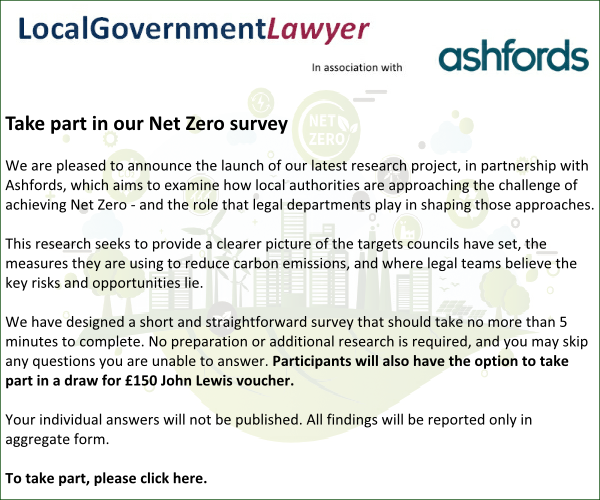The Court of Appeal on revocation of adoption orders
- Details
Catherine Ellis considers the implications of the ruling in Re X&Y on the High Court’s ability to revoke adoption orders.
The Court of Appeal has firmly closed the door on the High Court exercising an inherent jurisdiction to revoke adoption orders. Does the decision in Re X & Y (Children: Adoption Order: Setting Aside) [2025] EWCA Civ 2 (“Re X & Y”) come as any particular surprise? And where does it leave those who are experiencing and living the tragic and traumatic situation of an adoption that has irredeemably broken down?
Pre Re X & Y
In March 2022 ([2022] Fam Law 302) I analysed lines of authority in respect of the High Court’s powers to revoke orders made for the adoption of a child. The Court of Appeal has now completed the same exercise on a far more comprehensive basis and has clarified the legal position. My view in March 2022 was that an application for revocation of an adoption order could properly be brought under the inherent jurisdiction of the High Court as an alternative to such a remedy being sought on appeal. The Court of Appeal, following its own exercise, has ruled that I was wrong.
My view had been that, although it was severely curtailed and only to be exercised in cases where a failure of natural justice had occurred:
“…in situations where a fundamental breach of natural justice appears to have been made, the High Court will entertain applications to appeal or revoke”.
I take some comfort in the fact that, in holding that view, I was in the esteemed company of all the legal representatives in the case of Re X and Y (which numbered many highly regarded children law practitioners, including four top family silks), as well as various High Court judges. All counsel in the Re X & Y case had found common ground in agreeing that such a power did exist in very particular and limited circumstances. This, in turn, was based on various High Court authorities, stemming from at least 2013 onwards, where the court had also held that such a power did exist – albeit that some of those judges had declined to exercise it. Lieven, J herself, at first instance in Re X and Y, had accepted the power existed, but declined to exercise it.
So, how did such a long line of inaccurate authorities come about? The short answer, in my view, is that it appears to be due to courts and representatives affording insufficient weight to the authority of Re B (Adoption: Jurisdiction to Set Aside) [1995] Fam 239 (“Re B”), combined with a common misunderstanding that certain dicta offered in the Webster case –to the effect that the “court” did have such a power – applied to the High Court. We now know it applies only to the Court of Appeal.
Re X&Y – the Facts
The Re X & Y case was a sad one. Two young people (aged 16 and 17 at the time of the hearing before Lieven, J) were at the centre of it. They had been adopted in 2012 at ages 5 and 4, following a prolonged period in foster care. They did not settle well and asked for continuing contact with their birth mother (“BM”), which was facilitated. BM then had three further children who remained living in her care. During the Covid lockdown in 2020 boundaries between the adoptive and birth families were considerably blurred, with BM and the younger children moving in with the adoptive mother (“AM”) and X &Y for a period, in order to enable BM to escape an abusive relationship.
In August 2021 X&Y both left AM’s home and eventually moved to live with BM. At one point X moved to live with her birth father (“BF”). The LA issued care proceedings in 2023. Y wished to remain living with BM and did not want AM to continue to have parental responsibility for her. X wanted to live with BF and maintain a relationship with AM.
In April 2023 AM made an application to revoke the adoption orders. By the time of the hearing of AM’s application, X’ placement with BF had broken down. She had moved between the care of AM and BM, settling eventually back with BM. Although X had initially not supported AM’s application, her position by the time of the hearing was that she did now support it. Y had consistently held the position that she wished to be “unadopted”.
There was no question of any error of law or procedure having occurred in the making of the adoption orders. Lieven J found that she had no power to revoke the adoption orders purely on welfare grounds and refused the application, despite finding that it would be in the best welfare interests, certainly for Y, if the adoption orders were revoked. AM appealed to the Court of Appeal.
Re X & Y – the Appeal
The application for revocation had been supported by all parties. Therefore, there was no natural voice of opposition in the first instance court. The Secretary of State for Education (“SoS”) was therefore invited to intervene in the appeal, and did so.
On appeal AM submitted that Lieven, J had been wrong in her analysis of when and how the power under the inherent jurisdiction should be used. It was said that Lieven J had construed the power too narrowly, by holding that only in an “exceptional” case would the court exercise jurisdiction. This was an error and the “legal contrivance” of the continuing situation ran contrary to the children’s welfare and should not be tolerated. AM contended that there was a necessity in the case to correct the “legal fiction” that arose from the children now being parented by BM.
AM also submitted that neither the High Court nor the Court of Appeal had excluded “welfare” as a consideration to be taken into account when determining an application to revoke an adoption order. She accepted that welfare of the child would not be paramount.
Various policy considerations were proposed on behalf of the SoS which were set out in full in the judgment (at paragraph 36 of the judgment) and broadly agreed between the parties. These considerations focussed on the clear and unequivocal drafting of adoption legislation to create a lifelong and irreversible transfer of parental status. Any possibility of birth parents challenging the finality of an adoption order would gravely damage the lifelong commitment of adopters to adoptive children and could cause public perception that adoption is reversible and a less serious undertaking than biological parenting. This, in turn risked diminishing the value and importance of adoption as a means of providing a permanent family to children in care.
The SoS pointed to consistent research demonstrating that a central factor relevant to the success of an adoptive placement is the stability of the adoptive family relationships and commitment to the child. Any measure which undermined or weakened the finality and certainty of adoption risked deterring potential prospective adopters. Observations were also made about viewing long established public policy considerations through a modern lens, with regard given to open adoptions (which are growing more common) and the impact of social media on adopted children making contact with their birth families. Finality, certainty and confidence in the adoption were key to making these types of situation work.
There appears to have been a measure of agreement across the bar in the case as to these policy considerations. There was also agreement between all parties as to two principal propositions which it was said could be extracted from the decided cases, and upon which the appeal grounds rested:
- The High Court has the inherent power to revoke an adoption order, but only in “exceptional and very particular circumstances”
- Neither the High Court nor the Court of Appeal had excluded the child’s welfare as a consideration which can be taken into account when determining an application for revocation;
As it happens, these two “principal propositions” were incorrect.
Despite how the grounds were framed, the Court of Appeal considered that, actually, the single question of law to be determined was: Did the High Court have any jurisdiction to set aside a validly made order for the adoption of a child, other than by way of an appeal? It took the view that, if that question were answered in the affirmative, then subsidiary issues of how and when it should be exercised would arise. However, it very much did not answer the question in the affirmative.
I don’t plan to trawl through all the cases considered by the Court of Appeal when undertaking its exercise. I recommend reading paragraphs 44-60 of the judgment if you would like to have more detail. However, the cases of Re B and Webster, require some consideration, as do some of the “outlier” High Court authorities that were considered (NB: I consider an “outlier” in this context to be a case where the CA has not been particularly critical of the High Court exercising a jurisdiction to revoke).
Re B (Adoption: Jurisdiction to set aside) [1995] Fam 239 (“Re B”):
Re B was an appeal by an adult adoptee against a High Court refusal to set aside an adoption order made 40 years previously. Sir Stephen Brown, P, had held that there was no power for the High Court to do so. The adoptive parents were deceased by the time of the application. The issue for B was that his birth family were of Muslim heritage, yet he had been adopted by a Jewish couple. Neither the birth nor adoptive parents were aware of the different heritage of the other. As an adult, B wished to set aside the order as he had had difficulties travelling and working in the Middle East. The adoption order itself had been regularly made and had been acted on throughout A’s minority.
The Court of Appeal in Re B upheld the decision of Sir Stephen Brown, P, to refuse to revoke the adoption order, holding that although the case was exceptional, the integrity of the adoption system was more important and “its inviolability must be the ultimate imperative”.
In Re X & Y MacFarlane, LJ, considered Re B to be
“unquestionably the most relevant case to the present appeal… binding upon us. It is the only decision of this court to directly consider the question of whether the High Court had an inherent power to revoke an adoption order, and it is strong authority for the proposition that the power did not exist…”
It appears that the significance of Re B had not been fully appreciated by courts and practitioners before now.
When we look at Re B in the context of the “legal fiction” argument put forward by the Appellant in Re X & Y, we can see that the two cases are based on very different sets of facts. B, who was an adult, had led his entire life until the application as an adopted child of his adoptive parent. It would clearly have created a historic legal fiction had the adoption order subsequently been revoked.
Webster v Norfolk County Council [2009] EWCA Civ 59 (“Webster”)
Webster was a case where care and placement orders had been made in care proceedings after a fact-finding hearing had implicated both parents as being likely to have caused significant injuries to one of the children. Those findings were later deemed to have been made as a likely miscarriage of justice in the care proceedings. However, by this point the children had lived with the proposed adopters for nearly four years and the adoption order had been in place for three of those.
The case was brought to the Court of Appeal as an appeal out of time against the making of the adoption orders. However, it was not suggested by any party that there was any procedural irregularity or other defect in the adoption proceedings. Therefore, the applications proceeded on the basis that the orders had been properly and lawfully made in good faith on the basis of the evidence available at the time. The Court of Appeal held that therefore they must stand, and the applications were dismissed. The court also found that the further evidence upon which the parents now relied, could have been obtained for use at the trial with reasonable diligence.
Wall LJ, (delivering the judgment of the court) observed that:
“the public policy considerations relating to adoption, and the authorities on the point… simply make it impossible for this court to set aside the adoption orders even if, as Mr and Mrs Webster argue, they have suffered a serious injustice”
and
“adoption is a statutory process. The law relating to it is very clear. The scope for the exercise of judicial discretion is severely curtailed. Once orders for adoption have been lawfully and properly made, it is only in highly exceptional and very particular circumstances that the court will permit them to be set aside”
And referenced the “vast social importance of not undermining the irrevocability of adoption orders”.
Macfarlane, LJ, in Re X&Y, made a specific observation about Webster to the effect that “the question of whether the High Court had a power to revoke an adoption order did not arise, and there is consequently no reference in the judgments to the question of whether there is an inherent jurisdiction.” And made clear that “the court” Wall LJ referred to was the Court of Appeal and not the High Court. MacFarlane, LJ then observed that “that distinction has not been understood in a number of later decisions” and went on to review various subsequent High Court cases.
The High Court Authorities
I don’t propose to go into all of the cases reviewed by Macfarlane LJ in Re X&Y in detail. However, in summary, he concluded that PK v Mr and Mrs K [2015] EWHC 2316 (“PK”) and AX v BZ (Revocation of Adoption Order) [2021] EWHC 1121 (“AX v BZ”) – the High Court in each case having decided to revoke the adoption orders – were wrongly decided. Judicial comment made by High Court judges in other cases, stating that the High Court did have such a power were also incorrect. Macfarlane, LJ, made clear that there was no such jurisdiction and that legal comment that suggested otherwise was based on an erroneous application of the authorities.: “statements about the extent and nature of the powers of High Court, originating in Re W, continuing in Re O and culminating in the summary in AX v BX are not correct and should not be followed”.
(NB: Re W (Inherent Jurisdiction: Permission Application: Revocation and Adoption Order) [2013] EWHC 1957), Citations for Re O and AX v BX are below).
As always, there remain a few anomalies. One of these is Re O (A Child) (Human Fertilisation and Embryology: Adoption Revocation) [2016] EWHC 2273 (Fam) (“Re O”). This case concerned a same sex couple who had been wrongly advised that one of the parents had to formally adopt the child that had been born to both parents via IVF, due to a paperwork error at the clinic that had facilitated the treatment. The adoption order had been made by a district judge. Subsequently it had been determined that both parents had been the legal parents of the child since birth and there had been no need or purpose in making the adoption order. The High Court (Munby, P) found that the High Court did have the power to revoke the adoption order, found that there had been a mistake of law that “went to the very root of the adoptive process” and revoked the order.
In Re X&Y, Macfarlane, LJ deals with Re O by stating that the case “arose from a very specific situation in which the revocation of the adoption order was a formality, albeit an important one” and delivers no particular rebuke to Munby, J for taking the course he did.
The second outlier is perhaps the case of Re J (A Minor) (Revocation of Adoption Order) [2017] EWHC 2704 (“Re J”), where Hayden J opted to revoke an irregularly made adoption order rather than refer the case to the Court of Appeal as an appeal. This was in order to avoid delay, citing the authority of Re K (Adoption & Wardship) [1997] 2 FLR 221. Macfarlane, LJ – with perhaps what could be considered the mildest of reproach – deals with this case by saying:
“…the steps taken to remedy the errors in that case were clearly appropriate, though the decision in Re K does not in fact indicate that an application to revoke should be made to the High Court. The court in Re J did not consider the option of correcting the judgment or order under the slip rule”
ZH v HS (Application to Revoke Adoption Order: Procedure in Non-Agency Adoption Placement) [2019] EWHC 2190 (Fam) was another case where the High Court revoked an adoption order on a first instance application – the court citing the “Re O approach” as authority. Revocation was an agreed outcome by the parties. Macfarlane deals with this by stating that “reasons of convenience aside, it is not clear why the application in that case was dealt with at first instance, rather than by way of an appeal out of time”, thus indicating that the overall outcome was not incorrect but that the court had not opted for the correct legal route to get there.
We can see that the Court of Appeal in Re X & Y was able to reason around these authorities as tactfully as possible. Additionally, MacFarlane, LJ commented that, if revocation of an adoption order were ever necessary in order to comply with Convention obligations, it would almost certainly be in the context of an appeal out of time.
The main headline from the Court of Appeal’s analysis of the earlier authorities is that “The key authority remains the decision of this court in Re B, which stated that the courts should be strict in their refusal to allow adoption orders to be challenged otherwise than by way of appeal”. The powers set out in the dicta in Webster did not relate to the powers of the High Court at all.
Further, it has been made clear that there is no support for the proposition that adoption orders can be set aside on welfare grounds. “…the development of the law in that direction has been at odds with… the inviolability of regularly made adoption orders as being the ultimate imperative. The requirement for an extension of time for appealing is an important filter in protecting adoption orders from challenge, and it should not be circumvented by the assumption of an original jurisdiction at first instance.” The child’s welfare would, however, be a consideration for a court deciding whether to grant permission to appeal out of time.
Macfarlane, LJ recognised that there may still yet be future outliers “There may nevertheless be very narrow and specific instances in which the High Court finds it necessary to entertain an application to revoke an adoption order but they will only arise where for some reason an appeal, in or out of time, is not possible” (citing G v G as an example, stating that the particular statutory framework surrounding surrogacy arrangements made it impracticable to bring an appeal). However, he was at pains to point out the alternative routes to remedy that existed for the Family Court – and with specific reference to some of the anomalies I have discussed (at paragraphs 28-31, above).
For example, in cases where the failure to serve a party has been quickly identified, the High Court or Family Court can correct the position by using 5 (set aside following failure to attend hearing). There is also the availability of the slip rule FPR 29.16, which was raised by Macfarlane LJ as having been a potential mechanism to correct the error that arose in Re J. With regards Re O, MacFarlane observes that Munby P could have alternatively sat in the Court of Appeal and set aside the order unopposed under CPR PD52A.
Essentially, despite the overall headline, the Court of Appeal was keen to identify other mechanisms that could be utilised to achieve the righting of any injustice or rectifying of any mistake where the facts have heavily supported revocation.
However, the firm message is that “there is no jurisdiction at first instance to set aside a validly made adoption order”. The policy considerations submitted by the Secretary of State were considered to be of fundamental principle with respect to adoption. “Adoption orders are transformative, have a peculiar finality and are intended to be irreversible, lasting throughout life, as if the child had been born to the adopter.” The court agreed with the Secretary of State that it would gravely damage the lifelong commitment of adopters to their adoptive children if there were a possibility of the finality of the adoption order being challenged on welfare grounds.
Let us not forget that, as per paragraph 20 Re X&Y: “In cases that do not involve adoption, there is no legal mechanism by which natural parents or children can extinguish the parental bond between them, however much they may wish to do so. The statutory scheme replicates this state of affairs in respect of adoptive parents and adopted children. The only gateway out of a legal parent/child relationship is adoption… Parliament has made express provision for an adoption order to be made even if the child to be adopted is already an adopted child.”
Given that firm steer, the decision in respect of welfare grounds appears obvious. The potential implications of such an avenue of judicial discretion – which would inevitably be extremely wide, however much the canon of “extremely rare circumstances” doctrine attached to it – being made accessible to the first instance judges presented with these (often extremely miserable) applications to revoke adoption orders would be unfathomable. Most of the cases that come before the court involving families and children are brought on welfare grounds. It is not difficult to see how it would inevitably lead to many applications to revoke adoption orders, over time, being granted and how this would be likely to water down both the perception and reality of adoptive permanence considerably and irrevocably.
The only gateway out of such a tragic situation is further adoption. For some children this may be an option. However, for many it will not be, or it will not be a remedy they wish to pursue (as per Y’s position in Re X&Y. It is only available to those who are minors and would not, for example, have assisted the Appellant adult in Re B. Additionally, even for those to whom it is potentially available, it does not come without various procedural and other hurdles.
So what is the answer? How can families in these extremely distressing, traumatic and heartbreaking situations find a remedy? It is difficult to think of a legal solution that would fit all or even many situations. But there is an obvious need – as there has been for a very long time already – for greater funding for adoption support post orders being made. Perhaps it is a pipe dream to hope for tailored support being available for periods known to be flash points within families. Sadly, the current practice, limited to standard local authority intervention/universal services once matters have reached crisis point (an inevitable product of the mismatch between the funding provided to local authorities and the demand for their services) is failing many adopted children and their families.
Catherine Ellis is a barrister at Pump Court Chambers.
Must read
Local authority legal teams after Mazur
Antisocial Behaviour Legal Officer
Regulatory/Litigation Lawyer
Solicitor - Litigation
Locums
Poll
18-03-2026 1:00 pm
01-07-2026 11:00 am



























